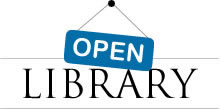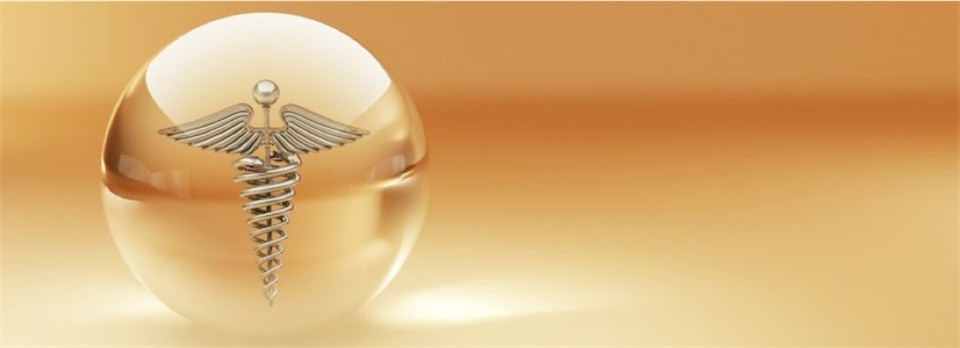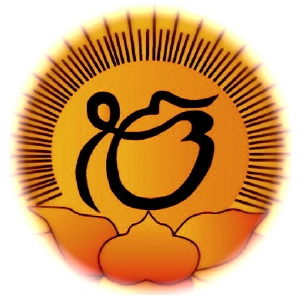Every
year, nearly 2.5 million people go under the knife unnecessarily,
often with devastating consequences. Make sure you're not one
of them.
Due
to the power and corrupting influence of Big
Pharma, the teaching
of nutritional science and the use of vitamin and herbal supplements
is
not taught to any significant extent in our medical schools. The
obvious
reason is that teaching this science reduces the use of prescription
drugs.
Two years ago, when Leah Coppersmith went in for back surgery,
she expected to be lacing up her running shoes within days. She's
been in pain ever since.
A car accident in 1991 left this mother of four with nagging lower-back
pain--annoying, but not bad enough to keep her from running 5-Ks.
But in 2005, the nag grew to a scream.
An MRI revealed that two disks -- the gel-filled cushions between
the vertebrae -- were badly worn. Coppersmith expected the doctor
to recommend a diskectomy, in which part of a troublesome disk
is removed to relieve pressure on the nerve; the low-risk surgery
had helped her once before. But this time, the surgeon wanted
to replace a disk with an artificial one. The procedure was getting
great results, he said. Coppersmith was skeptical until he told
her she'd be back running 5-Ks again in no time. She laughs bitterly
at the memory.
Pain is now the defining feature of her life. She can't sit down
to family dinners. She quit her job because she can't work at
a desk. Her misery has company: While looking for help online,
she found a study showing that 64% of people who received the
disk, called the Charité, still needed narcotic painkillers
2 years after surgery.
Every year, upward of 15 million Americans go under the knife
-- and for most of them, surgery provides relief or a new lease
on life. Joints are replaced, organs are transplanted, lives are
saved. But Congress has estimated that surgeons perform 2.4 million
unnecessary surgeries a year in the United States, with a cost
of roughly $3.9 billion--and a toll of about 11,900 deaths. The
reason isn't simple.
"The majority of surgeons who perform these procedures are
actually very enthusiastic about their benefits," says Mark
Chassin, MD, chair of the department of health policy at Mount
Sinai School of Medicine. "It's not like they get up in the
morning and ask themselves, How many unnecessary procedures can
I do today? But there's a lot of financial incentive to do surgery
that may not benefit the patient, and very little oversight."
So how do you know when someone is suggesting surgery you don't
need -- and what can you do to prevent it? Your first line of
defense is to become your own advocate. One study showed that
when patients and doctors share the decision making, rates of
surgery drop by as much as 44%. Here, we explain what's behind
four of the procedures most often done unnecessarily and give
you expert advice on the best alternatives.
BE SKEPTICAL: SPINAL SURGERY
The waiting room of Charles Rosen, MD, a spinal surgeon and an
associate professor of orthopedic surgery at the University of
California, Irvine, was filled with patients who, like Coppersmith,
had failed disk implants. "In my 20 years of orthopedics,
I'd never seen so many people in such a severe state of constant
pain," he says. So Rosen examined the evidence backing the
Charité disk. He was shocked to see that the researchers
had compared patients who got the disk with those who received
a type of fusion surgery with a particularly high failure rate
-- 60%. (Even before the study's publication, that procedure had
been largely abandoned.) Then he discovered that researchers on
other Chariti studies were paid consultants for the device maker.
Outraged, Rosen founded the Association of Ethical Spine Surgeons.
Members agree not to take money from device makers or form partnerships
with the companies.
The spine is ground zero for unnecessary surgeries partly because
back pain is incredibly common and notoriously tough to treat.
More than 1 million sufferers opt for surgery each year, and spinal
fusion -- the use of bone grafts, screws, and other devices to
secure one or more vertebrae -- is one of the most popular choices.
Between 1996 and 2001, the number of spinal fusions skyrocketed
113%, while the number of knee- and hip-replacement surgeries
rose just 15% and 13%, respectively. But unlike those procedures,
spinal surgeries often fail -- instead of relieving pain, they
can turn it into agony. According to Aaron Filler, MD, PhD, director
of the Peripheral Nerve Surgery Program, Institute for Spinal
Disorders, at Cedars-Sinai Medical Center in Los Angeles, there
are tremendous rewards for spinal surgeons who do aggressive procedures:
Because of the hardware involved, an operation on the spine can
pay a surgeon 10 times as much as one on the brain. Yet the moneymaking
back surgeries help in only a small proportion of cases. What's
more, back surgeons are rarely held accountable if the operation
fails. "The referring doctor has low expectations,"
Filler says. "So does the patient, because everyone thinks
of back problems as so difficult to treat."
Protect Yourself
Pinpoint the pain: If your doctor labels your back pain as "nonspecific,"
it means he doesn't know the cause; if he suggests surgery, alarm
bells should go off, says Filler. Spinal fusion is most beneficial
when vertebrae slip out of place and press on the ones below,
which is easily detected on an x-ray. "When properly done
for the right reasons, spinal surgery can be extremely effective,"
says Filler.
Make lifestyle adjustments: A 2003 study compared spinal fusion
surgery with a lifestyle approach to back pain: Docs taught patients
how to protect their backs, by bending at the knees when lifting,
for instance. They also encouraged exercise, like water aerobics.
A year later, the nonsurgical approach reduced pain and increased
mobility just as much as surgery did. Alternative treatments such
as chiropractic and acupuncture can also pay off, studies show.
For more info on finding alternative treatments, go to prevention.com/links.
Consider a helpful shot: A nerve-blocking injection called an
epidural, given by a surgeon or a rehab specialist like a physiatrist,
may quiet the pain for up to a year; it helps in about 50% of
patients.
Skip the hardware: If surgery seems like the right approach, get
the simplest procedure possible. There's a much smaller chance
of complications if you have a diskectomy, for example, than if
you have an artificial disk implanted.
BE SKEPTICAL: HYSTERECTOMY
Lori Jo Vest was 36 when three doctors told her a hysterectomy
was the only fix for her heavy bleeding caused by uterine fibroids.
Terrified that she'd be thrust into early menopause--in half of
all hysterectomies, surgeons end up removing the ovaries, too--Vest
went online and discovered myomectomy, in which the surgeon cuts
out the fibroids, sparing the uterus. But her doctors nixed the
idea; after all, they said, Vest, who had a toddler, didn't want
more children. Then Vest called the nearby University of Michigan,
Ann Arbor--and nearly leaped through the phone when she heard
they had a clinic for women seeking alternatives to hysterectomy.
"The doctor said I was a perfect candidate for myomectomy,"
Vest says. She also told Vest that many surgeons dislike the surgery
because it's more difficult than a hysterectomy. Now 44, Vest
no longer is troubled by heavy bleeding, but she still has her
uterus and ovaries. *"I don't want to go through menopause
until my body is ready," she says.

Hysterectomy is second only to C-section as the most common surgery
performed on women in the United States. Each year more than 600,000
Americans have the procedure--twice the rate as in England. A
2000 study found that 70% of the hysterectomies performed in nine
Southern California managed-care organizations were recommended
inappropriately. "The most common mistake we saw was that
doctors didn't try safer, less-invasive approaches first,"
says lead author Michael Broder, MD, an assistant professor of
obstetrics and gynecology at UCLA's David Geffen School of Medicine.
Hysterectomy can be warranted if a woman has cancer, and it can
be the right choice in other cases, too--for instance, if medical
treatment didn't get your bleeding under adequate control, and
you don't want to try a surgery like myomectomy because of the
risk of recurrence. But unless you have cancer, "having a
doctor say, 'You absolutely need a hysterectomy,' is akin to a
waiter at a restaurant saying, 'You've got to have the steak,'"
says Malcolm G. Munro, MD, a professor of obstetrics and gynecology
at UCLA. "A good doctor should give you a menu of choices."
Protect Yourself
Try hormones or drugs first: Most hysterectomies are done on women
under age 45, but if you can manage symptoms of fibroids with
medication until menopause, symptoms usually ease naturally. Birth
control pills or other drugs help control irregular bleeding.
Also check into getting a progestin-releasing IUD (Mirena): It
can dramatically decrease bleeding caused by fibroids.
Consider a less drastic procedure: Like myomectomy, uterine fibroid
embolization (UFE) preserves the uterus: An "interventional"
radiologist carefully closes off blood vessels feeding the fibroids,
starving them. A woman may need more treatment after either procedure
if the fibroids come back, and both cause a fair amount of discomfort.
(UFE can require serious pain meds, although recovery is quicker
than after a hysterectomy, and the risks are lower.) For more
info on hysterectomy alternatives, go to prevention.com/links.
BE SKEPTICAL: ANGIOPLASTY
When Irwin Melnicoff, a forensic engineer in Boynton Beach, FL,
felt a stabbing chest pain at age 45, he went straight to the
cardiologist. The diagnosis? A narrowed artery. The answer? Angioplasty.
But Melnicoff was scared of surgery; even when the doctor told
him he'd die without the artery-opening procedure, he chose drug
therapy instead. (He also chose a new doctor.) That was 25 years
ago. With the help of daily heart medications, his chest pain
vanished. He walks 30 minutes a day, 7 days a week, and feels
great.
He made the right choice. Though angioplasty has been hailed by
some as a wonder fix for decades, it now turns out that most of
the time, the procedure doesn't help. Angioplasty can save your
life if it's done during or right after a heart attack. But in
other circumstances, it may not do you much good.
"Doctors used to think of heart disease as a plumbing problem--that
arteries were like drainpipes gradually being clogged by plaque
made up mostly of cholesterol," says Arthur Agatston, MD,
a preventive cardiologist and author of The South Beach Heart
Program. So it seemed to make sense to use angioplasty, in which
a small balloon is inflated in the artery, to get that gunk out
of the way by squashing it against the vessel wall. However, research
has since shown that problematic plaque actually forms within
the delicate inner lining of artery walls.
What does cause a heart attack? If the plaque within the wall
ruptures, it injures the artery, producing a blood clot as part
of the healing process. Unfortunately, the clot can close off
the entire artery--that's a heart attack, and you need angioplasty
or bypass surgery immediately. If you have angioplasty, the doctor
may also insert a stent, a mesh scaffolding, to hold open the
artery.
But if you're not having a heart attack, angioplasty (with or
without a stent) won't help and may even do some harm. That's
the news from a large trial published in April in the New England
Journal of Medicine. People with "stable" heart disease--they
weren't having a heart attack, but a vessel was at least 70% closed--fared
no worse if they received medical therapy, such as aspirin, blood
thinners, and cholesterol-lowering drugs, than if they got angioplasty.
During the next 4 1/2 years, neither group was more likely to
have a heart attack or stroke or die.
A study published late last year helps pinpoint exactly when it's
worth getting angioplasty. That trial showed that if the procedure
was done 3 or more days after a heart attack, it didn't help.
"We were very surprised--we thought angioplasty would be
beneficial even if it was done later," says lead author Judith
Hochman, MD, director of the cardiovascular clinical research
center at New York University School of Medicine. "But that's
why we do studies: to see if the patient really does benefit."
Protect Yourself
Insist on being convinced: If your doctor says you need a non-emergency
angioplasty, ask if it will prolong your life. "That question
puts a cardiologist on the spot," says Agatston. If the procedure
isn't needed to save your life, it still may make sense if angina
(bouts of chest discomfort caused by a lack of blood flow to the
heart) interferes with daily activities. But get a second opinion--from
a preventive cardiologist, not a cardiac surgeon.
Eat right, exercise, and lose weight if necessary: You needn't
avoid fats and carbs to keep your heart healthy--just choose wisely.
A diet high in omega-3-rich canola and olive oils can actually
protect your heart. High-fiber carbs in whole grains, fruits,
and veggies also help get fats out of your blood.
Use the meds known to save lives: Many people with high cholesterol
aren't on statins, though the drugs slash the risk of heart attack
by more than 30%. Similarly, most people with high blood pressure
don't get adequate treatment, studies show. Lifestyle changes
can bring down both cholesterol and BP, but if they're not enough,
medication can be lifesaving. Your doctor may also put you on
daily aspirin or another drug to lower the risk of a blood clot.
BE SKEPTICAL: KNEE ARTHROSCOPY
Soon after Diana Aceti turned 50, the ache in her knee began to
keep her from walking and playing tennis, two activities she loved.
An orthopedist said that she had a small tear in her cartilage
and recommended arthroscopic surgery. "He said I'd back on
my feet in a few weeks," says the public relations director
from Bridgehampton, NY.
But afterward, Aceti's knee hurt worse than ever. So she got a
second opinion--and the news wasn't good. In a rare complication,
her cartilage was damaged beyond repair, and she needed a partial
knee replacement. "Doctors talk about surgery like it's getting
your teeth cleaned," says Aceti. "If he'd told me this
was a possibility, I never would have done it."
Knee arthroscopy is most often used for people, like Aceti, who
have osteoarthritis--cartilage damaged by wear and tear. A surgeon
makes small incisions and inserts instruments to remove tissue
fragments and wash out the joint in the hopes of reducing pain.
Yet in 2002, when knee arthroscopy was put to the test in a randomized,
controlled trial, it failed royally. Osteoarthritis patients given
arthroscopy reported no more improvement than those who got sham
surgery--incisions were made but no arthroscope was inserted.
Still, 5 years later, the procedure remains among the top 10 outpatient
surgeries: More than 650,000 knee arthroscopies are performed
annually.
Critics say that almost everyone has small tears in their knee
cartilage visible on MRIs, providing a never-fail excuse for surgery.
"Patients have arthroscopy for what is clearly the result
of a bruise or a bump," says Ronald Grelsamer, MD, an associate
professor of orthopedic surgery at Mount Sinai Medical Center
in New York City. "For many orthopedists it's the only way
left to make a half-decent living. Does that justify it? No."
The procedure can help in certain situations, Grelsamer says:
If a piece of cartilage is catching, like a hangnail, clipping
it can make you feel better. And some doctors still believe that
for some osteoarthritis patients, flushing the interior of the
knee during arthroscopy can ease pain, perhaps by getting rid
of irritating chemicals. Researchers can't predict who will benefit
from a washout, though--and surgeon Bruce J. Moseley, MD, who
led the sham surgery comparison, argues that any improvement in
arthritis patients is due to the placebo effect.
Protect Yourself
Wait a while: Arthroscopy is most frequently done after a twist
or fall, but those injuries often get better within a few months
with physical therapy, anti-inflammatory meds, a cortisone injection--or
just the passage of time.
Be skeptical of MRI results: Arthroscopy is most apt to help if
there's a detached fragment of cartilage or a severe tear--a 3
on a 1-to-3 scale, as rated by a radiologist. But even a bad tear
may not cause pain, so ask whether it matches up with the area
that hurts. --

Extra Testosterone ... Could Mean
An Alpha Decision-Maker Type
Look for a long fourth finger.
If your significant other's ring finger is longer than
his or her index finger, it's an indication that he or
she was exposed to higher than average amounts of
testosterone in the womb, says Dr. John T. Manning of
Rutgers University in his book 'Digit Ratio.' This correlates
to a personality type , which tends to be logical, decisive,
and ambitious. Thus the testosterone exposure influences
your personality and subsequently who you love.


Alcohol Awareness
7 Best Bread Brands
9 Tips To Lower Blood Sugar
Dieterata: The Inner-Clean Diet
Use Baking Soda For Your Health
Malnutrition Causes Most Diseases
9 Facts Food Makers Hide From You
7 Surprising Signs of An Unhealthy Heart
10 Ways You Can Prevent A Hearth Attack
11 Banned Ingredients Still Allowed In U.S.
7 Things Your Hands Say About Your Health


Helpful Health Hints
















Pages And Points To Ponder























































































































































































































American
Crisis: The Military-Industrial Complex
 Your Health By DaSign
Your Health By DaSign  Other Views
Other Views
 Cleansing
Diet
Cleansing
Diet  Meatless Is Better
Meatless Is Better

